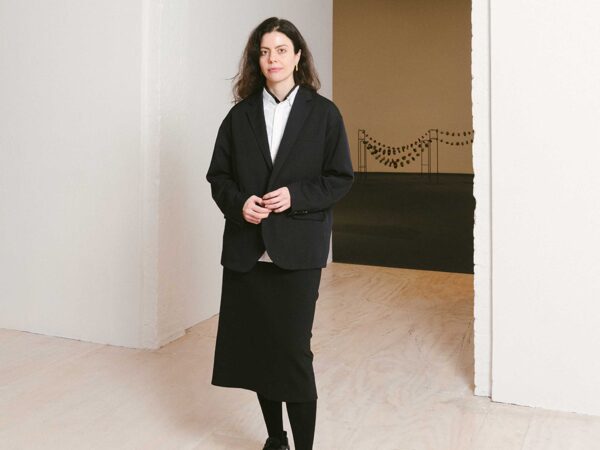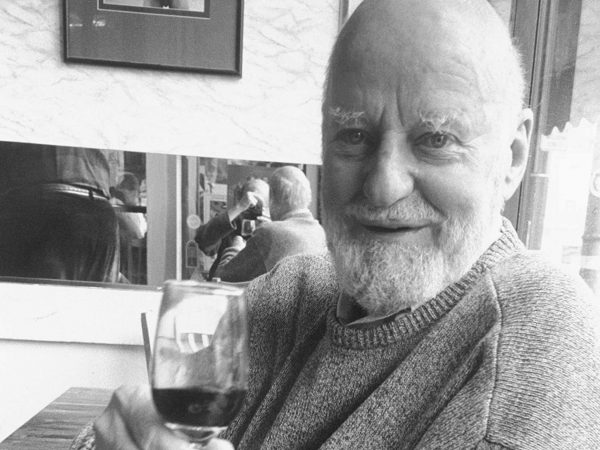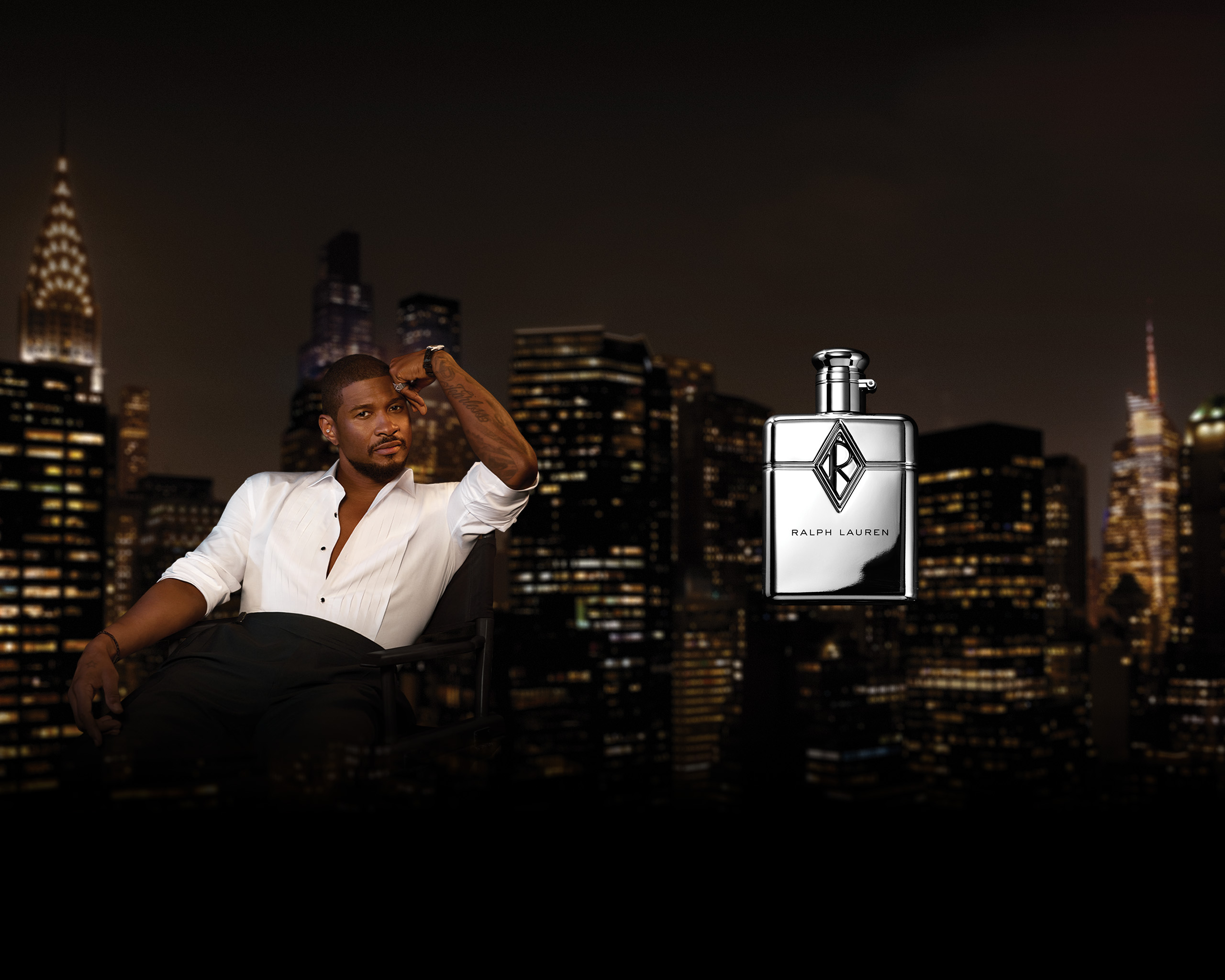The power of image, from an in-person first impression to an Instagram post shared with millions of followers, has now been commercialized and politicized, for better or for worse. The role that fashion plays in this is an increasingly important one, something of which Louis Vuitton’s artistic director Nicolas Ghesquière is ever mindful. Empowering legions of women with his designs, Ghesquière continually looks for ways to reinvent and reinvigorate, often turning to the hypothetical utopian environments of science fiction and video games as inspiration. Days before his Spring/Summer 2018 show in Paris, Ghesquière spoke with Document’s editor-in-chief, Nick Vogelson, to debate the question that is on everyone’s mind given the current political climate: where are we headed?
Above The Fold

Sam Contis Studies Male Seclusion

Slava Mogutin: “I Transgress, Therefore I Am”

The Present Past: Backstage New York Fashion Week Men’s Spring/Summer 2018

Pierre Bergé Has Died At 86

Falls the Shadow: Maria Grazia Chiuri Designs for Works & Process

An Olfactory Memory Inspires Jason Wu’s First Fragrance

Brave New Wonders: A Preview of the Inaugural Edition of “Close”

Georgia Hilmer’s Fashion Month, Part One

Modelogue: Georgia Hilmer’s Fashion Month, Part Two

Surf League by Thom Browne

Nick Hornby: Grand Narratives and Little Anecdotes

The New Helmut

Designer Turned Artist Jean-Charles de Castelbajac is the Pope of Pop

Splendid Reverie: Backstage Paris Haute Couture Fall/Winter 2017
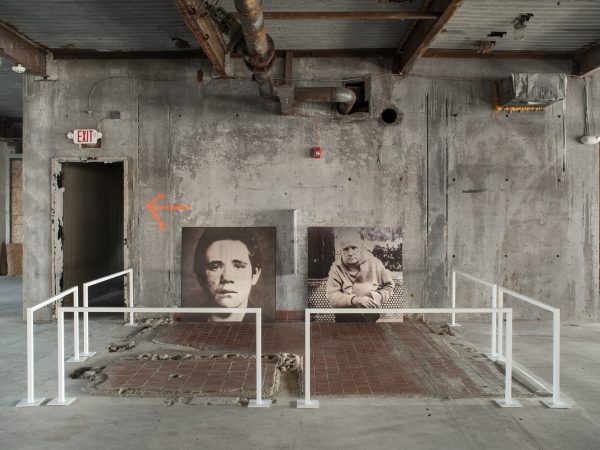
Tom Burr Cultivates Space at Marcel Breuer’s Pirelli Tire Building

Ludovic de Saint Sernin Debuts Eponymous Collection in Paris

Peaceful Sedition: Backstage Paris Fashion Week Men’s Spring/Summer 2018
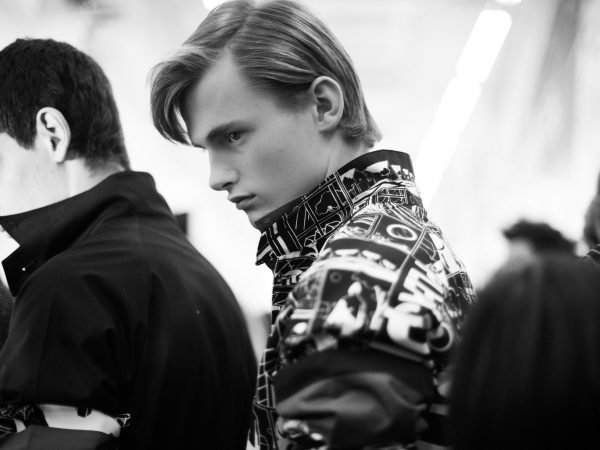
Ephemeral Relief: Backstage Milan Fashion Week Men’s Spring/Summer 2018

Olivier Saillard Challenges the Concept of a Museum

“Not Yours”: A New Film by Document and Diane Russo

Introducing: Kozaburo, 2017 LVMH Prize Finalist

Introducing: Marine Serre, 2017 LVMH Prize Finalist

Conscious Skin

Escapism Revived: Backstage London Fashion Week Men’s Spring/Summer 2018

Introducing: Cecilie Bahnsen, 2017 LVMH Prize Finalist

Introducing: Ambush, 2017 LVMH Prize Finalist

New Artifacts

Introducing: Nabil Nayal, 2017 LVMH Prize Finalist

Bringing the House Down

Introducing: Molly Goddard, 2017 LVMH Prize Finalist

Introducing: Atlein, 2017 LVMH Prize Finalist

Introducing: Jahnkoy, 2017 LVMH Prize Finalist

LVMH’s Final Eight

Escaping Reality: A Tour Through the 57th Venice Biennale with Patrik Ervell

Adorned and Subverted: Backstage MB Fashion Week Tbilisi Autumn/Winter 2017

The Geometry of Sound

Klaus Biesenbach Uncovers Papo Colo’s Artistic Legacy in Puerto Rico’s Rainforest

Westward Bound: Backstage Dior Resort 2018

Artist Francesco Vezzoli Uncovers the Radical Images of Lisetta Carmi with MoMA’s Roxana Marcoci

A Weekend in Berlin

Centered Rhyme by Elaine Lustig Cohen and Hermès

How to Proceed: “fashion after Fashion”

Robin Broadbent’s Inanimate Portraits

“Speak Easy”

Revelations of Truth

Re-Realizing the American Dream

Tomihiro Kono’s Hair Sculpting Process

The Art of Craft in the 21st Century

Strength and Rebellion: Backstage Seoul Fashion Week Autumn/Winter 2017

Decorative Growth
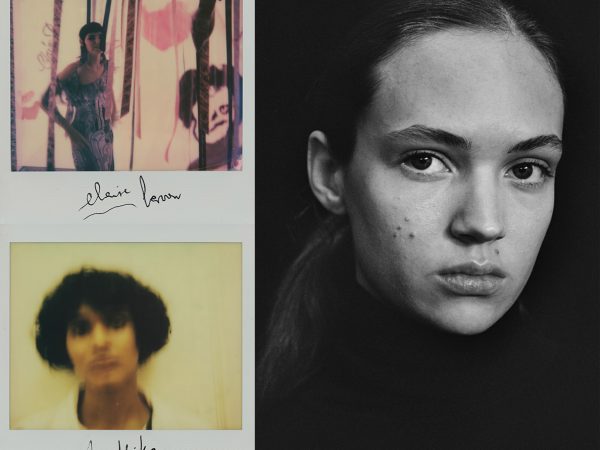
The Faces of London

Document Turns Five
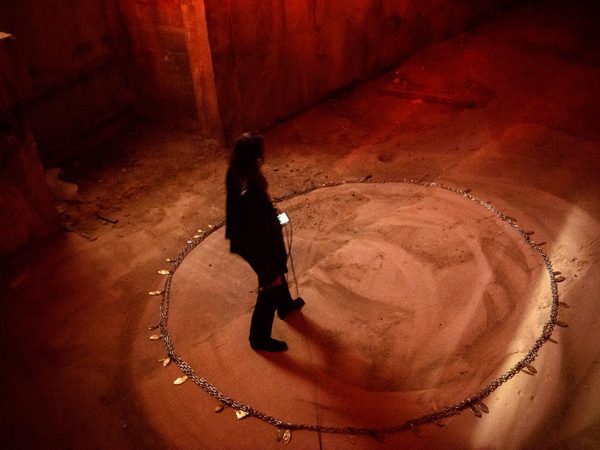
Synthesized Chaos: “Scholomance” by Nico Vascellari

A Whole New World for Janette Beckman

New Ceremony: Backstage Paris Fashion Week Autumn/Winter 2017
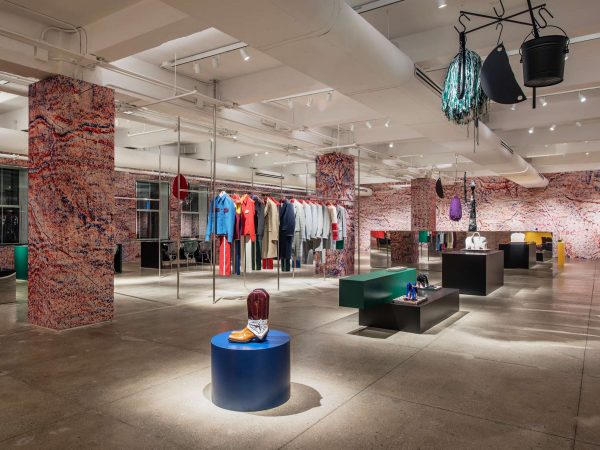
New Perspectives on an American Classic

Realized Attraction: Backstage Milan Fashion Week Autumn/Winter 2017

Dematerialization: “Escape Attempts” at Shulamit Nazarian

“XOXO” by Jesse Mockrin

Brilliant Light: Backstage London Fashion Week Autumn/Winter 2017

The Form Challenged: Backstage New York Fashion Week Autumn/Winter 2017

Art for Tomorrow: Istanbul’74 Crafts Postcards for Project Lift

Inspiration & Progress

Paskal’s Theory of Design

On the Road

In Taiwan, American Designer Daniel DuGoff Finds Revelation

The Kit To Fixing Fashion
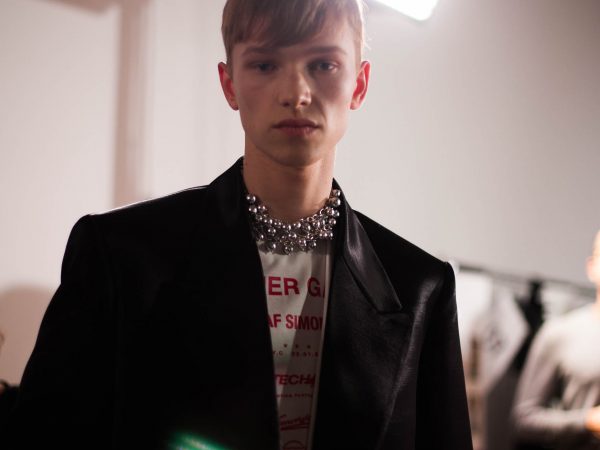
The Game Has Changed: Backstage New York Fashion Week Men’s Autumn/Winter 2017

Class is in Session: Andres Serrano at The School

Forma Originale: Burberry Previews February 2017

“Theoria”

Wearing Wanderlust: Waris Ahluwalia x The Kooples

Approaching Splendor: Backstage Paris Haute Couture Spring/Summer 2017

In Florence, History Returns Onstage

An Island Aesthetic: Loewe Travels to Ibiza

Wilfried Lantoine Takes His Collection to the Dancefloor

A Return To Form: Backstage New York Fashion Week Spring/Summer 2018

20 Years of Jeremy Scott

Offline in Cuba

Distortion of the Everyday at Faustine Steinmetz

Archetypes Redefined: Backstage London Fashion Week Spring/Summer 2018

Spring/Summer 2018 Through the Lens of Designer Erdem Moralıoğlu

A Week of Icons: Backstage Milan Fashion Week Spring/Summer 2018

Toasting the New Edition of Document

Embodying Rick Owens

Prada Channels the Wonder Women Illustrators of the 1940s
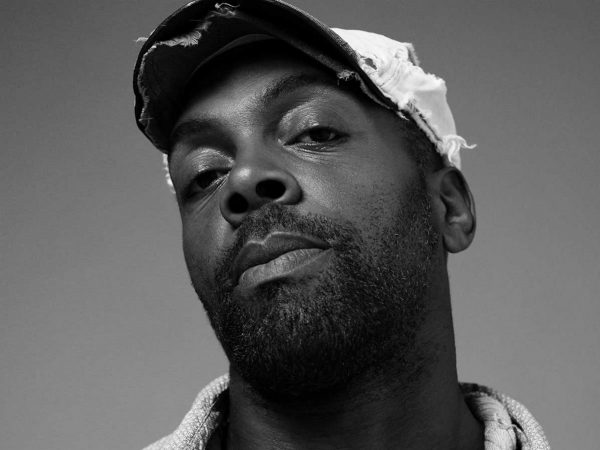
Andre Walker’s Collection 30 Years in the Making

Fallen From Grace, An Exclusive Look at Item Idem’s “NUII”

Breaking the System: Backstage Paris Fashion Week Men’s Autumn/Winter 2017

A Modern Manufactory at Mykita Studio

A Wanted Gleam: Backstage Milan Fashion Week Men’s Autumn/Winter 2017

Fashion’s Next, Cottweiler and Gabriela Hearst Take International Woolmark Prize

Beauty in Disorder: Backstage London Fashion Week Men’s Autumn/Winter 2017

“Dior by Mats Gustafson”

Prada’s Power

George Michael’s Epochal Supermodel Lip Sync

The Search for the Spirit of Miss General Idea

A Trace of the Real

Wear and Sniff

Underwater, Doug Aitken Returns to the Real
Nick Vogelson—Your references are very often drawn from science fiction, for instance the film “2046” to the anime series “Evangelion”—why do you gravitate towards the genre?
Nicolas Ghesquière—It’s the strange and unknown that fascinates me, whether it’s cult futurism or underground sci-fi. I’m always attracted to new territories, I don’t know why.
Nick—Would you say that science fiction particularly aids your creative process as a designer? What else inspires you?
Nicolas—It’s the dynamic between curiosity and seduction. The digital world is so precise, it’s the world of the zoom. We can enlarge everything, all must be perfect, and nothing is hidden, which is perfectly linked to my thinking. I’m also very inspired by other forms of art and design, and often circle back to brutalism or the work of Japanese designer Shiro Kuramata, for example.
Nick—Your cruise show was held at an I.M. Pei building, and you’ve previously held shows against the backdrop of structures by Lautner and Pierre Paulin. Would you say that architecture is also an important inspiration to you? Or is it more, as you mentioned, an interest in new environments?
Nicolas—I.M. Pei’s Miho Museum inspired me right away. After the desert and Palm Springs, the ocean and Rio, I wanted to introduce people to another landscape, to immerse them in a sea of green. With the Miho Museum we are continuing an architectural voyage that suits the maison Louis Vuitton perfectly. For our 2018 Cruise fashion show we were transported into a tangled web of nature, geographical greatness and a unique architectural vision. The spirit of travel and the discovery of extraordinary natural environments, architectural masterpieces and art are intrinsically connected to Louis Vuitton.
“Can people really absorb that much information in three months? Luxury needs time to develop, and it needs time to produce. I think waiting is something of a luxury now.”—Nicolas Ghesquière
Nick—Understanding what is, or isn’t, intrinsic to a brand’s DNA seems like a particularly important problem facing contemporary designers, with more and more heritage brands being revived. You’ve worked at Balenciaga and now Louis Vuitton, which are both legacy labels. In your opinion, how much of a house’s DNA should be carried forward in each collection?
Nicolas—At Balenciaga, it was a transmission; I was carrying on for someone. I probably underestimated how difficult it was. You just go for it at age 25, and the context allowed my determination to work. I am proud of it. I take responsibility for having put Balenciaga back on the map, with integrity. I understand that fashion, in essence, is about pushing forward, while not breaking away from the initial mold of a brand. There are many designers that succumb to a wistful affection for the past, and stay there. Then there are others that are constantly looking for the next best thing, and they forget about their core customer. To be truly successful, one has to look back to move forward. The exploration has to go a bit further; there’s still a certain respect for the patrimony, but also of technology, which is what I like.
Nick—What are some of the challenges you’ve faced with fusing heritage together with your own aesthetic?
Nicolas—It was quite confusing, to be honest with you. I got lost in that. Sometimes I thought the company was me, it was mine, it was not a heritage, we were the same object, we shared the same DNA. Then I realized I was wrong—it’s a marriage that can fail and that you have to work at to keep interesting and fresh. I feel very confident now in my current role at Louis Vuitton. It is an iconic house, rich in heritage and with a strong sense of patrimony, and today I’m still learning more and more about the house through the archives. What I like in this Maison is that my role is in constant evolution through the wealth of heritage and history which allows me to further my discovery and creativity. The teams at Louis Vuitton are very professional with a strong knowledge of savoir-faire which is very stimulating for product development. The Maison’s particularity is to always seek innovation, which I feel strongly about. For instance, when I designed the Petite Malle three years ago, I took an iconic symbol of Louis Vuitton, the trunk, a sacred piece of luggage steeped in years of travel and history and I turned it into a handbag. I put a modern twist on a heritage item and gave it new use and life to the new generation. The same could be said for the Eye-Trunk for iPhones which have been highly successful and was such a simple idea, yet no one had ever thought to develop it before. It reproduces the finishings and intricate details found on an original Louis Vuitton trunk, just like the Petite Malle. And above all it represents a new use of the trunk for the evolving fashions and evolving customers.
Nick—What about when it comes to silhouettes? Giving leather goods or other products new uses or applications is one thing, but evolving silhouettes must be an incredibly difficult task.
Nicolas—The most defining feature of the female silhouette in the 21st century so far has been in the way a woman wears sports clothes and mixes them with much more elaborate designer pieces. But this shift in the way women dress was driven by women themselves. Not by designers. And I think what’s most interesting is how we [as designers] react to that. It’s about movement also. I’m not saying people didn’t move before, but today the contours of the body have changed, there’s a new body consciousness about the way women dress.
Nick—Would you say then that technology is the driving force in changing silhouettes? Sportswear’s increased popularity can certainly be attributed to fabric innovation.
Nicolas—I’m fascinated by the way artificial fibers have become ennobled. A few years ago, if you were a Japanese designer you could use polyester in your collection and people would love it. If you were a European or an American designer, it would be seen as cheap. Today, textile development has become so strong and inventive that the integration of those fibers mixed with natural materials makes intelligent fabrics. I think today women dress for themselves. That’s changed a lot. They dress for men, but they dress for themselves first. This is why I think there is a greater desire for high fashion now, and a willingness to take more risks. It’s a proud moment for fashion.
Nick—Your work has always been synonymous with strong women. Your muses include Jennifer Connelly, Alicia Vikander, Michelle Williams, to name a few. What are the qualities you look for in a muse?
Nicolas—These women are not scared. They don’t just want to wear a boring dress on every red carpet. I look for people whose daring permits me to take the energy and the craft of old couture and make it new. A woman may be defined in ways that are unlimited, infinite, and sometimes paradoxical. What is fascinating about women is the way they can vary their weapons of seduction, the way they can adopt different styles yet make them reflect their personality. I like it when a woman interprets my designs, makes them hers, and even surprises me by the way she wears them. I like it when my designs become a part of a woman’s life and no longer belong to me. My viewpoint of femininity is above all that of a designer, and more specifically a male designer. But what I am constantly looking for, and what I am always happy to achieve, is when a certain idea I have of femininity corresponds to what a woman wants. That’s when everything comes together. There is nothing more inspiring for a designer than to have the feeling that you have found an answer.
Nick—And it’s much easier for a designer to be able to gauge the needs of their clients now, with social media providing instant feedback, as well as a glimpse into how your designs are being worn day to day.
Nicolas—I love social media. I love Instagram a lot, and I like Twitter a lot too. Instagram is very playful and it’s a wonderful tool for a designer. Louis Vuitton asked me to take over the Instagram account for a week. It was a little daunting when they first gave me the phone—the responsibility of 3.1 million followers and what to show, what not to show, what to suggest? I don’t like to filter and love that I can speak to many people very directly. The traditional barriers between designer and public have been broken and we now communicate freely and informally.
Nick—What do you think of shows transitioning from basic presentations to Instagrammable environments?
Nicolas—I love that the digital world and digital tools such as Instagram are inclusive. Digital communication allows us to show an aspect of what we do. And it’s enriching. I believe that people know what they want and know what they like, and the digital world is exciting and creates curiosity in people. But it’s also confused them. People see things on Instagram they can’t have right away—the digital platform is so immediate. As an industry, we have to make people understand that they have to wait for things they see on a screen. The see-now-buy-now model has had questionable results and that, again, is related to digital. Has it raised a new interpretation of luxury? Maybe. In the future, maybe the people who consume extreme luxury will be the people who understand that it needs time, while some of the collection will be more accessible and produced quicker. But it’s very, very complicated.
Nick—How do you handle the challenges of being a fashion designer today and creating numerous collections season after season, while also keeping up with the quickened pace that digital has created? For example, Gaultier bowed out of ready-to-wear in 2013 to concentrate on couture because he felt there are too many seasons in the fashion calendar. I think everyone agrees that the fashion week model needs to change. But where should it go?
“The more you multiply an event, the less exceptional it is. It takes time to develop a proper collection, with commercial pieces and interesting pieces, it’s not something you can do in a week.”—Nicolas Ghesquière
Nicolas—The more you multiply an event, the less exceptional it is. It takes time to develop a proper collection, with commercial pieces and interesting pieces, it’s not something you can do in a week. We’ve made so many jumps in the last decade already. I used to do a collection every six months and today we have only two or three months. I was working simultaneously on collections; I had about six weeks in between to finish Cruise. Can people really absorb that many clothes and that much information in three months? For certain markets maybe, probably a more casual market or a market that is more immediate in its consumption but luxury needs time to develop, and it needs time to produce. I think waiting is something of a luxury now.
Nick—Who are the designers that excite you?
Nicolas—To pick young designers of today, I would highly recognize the work of Julien Dossena and will strongly support Natacha Ramsay-Levi with her new career as creative director of Chloé. I’m very excited to see her new collection during Paris Fashion Week.
Nick—As publishing houses continue to look for new ways to stay innovative in the digital age, where do you think the fashion magazine is headed?
Nicolas—I hope paper magazines will never die, there is a luxury and reverence in touching and turning pages. Certain magazines are now considered as coffee table books. It will always be important to have strong content and the chance to discover fashion stories, which is not always the case in digital platforms where you often only see one beautiful image.
Nick—Both in terms of the design process and with print media, it’s so important to have the option to reflect before responding or vocalizing a viewpoint. Even more so now that the world is in such a chaotic time, with Trump, Brexit, rampant terrorism, migration, environmental catastrophes and more. How are these issues reflected in your collections?
Nicolas—The notion of frontiers is of fundamental importance. Ever since its founding in 1854, Louis Vuitton has also pushed the boundaries of know-how, innovation, design and travel. But what do frontiers mean in a globalized world that nonetheless seeks to redefine its boundaries? Today, when some people make us want to believe that the frontiers are stronger and stronger, I think fashion has always broken those frontiers. Especially in Paris—it’s the land of foreign designers; it’s so multicultural. Being in the Louvre where everyone is welcome, where there is no limit of culture, of nationality, is a strong message. Fear is the enemy. Fear of outsiders is the worst thing. Fear of the ‘other’ is what much of the world is saying today, but … from the street, people are saying, ‘The world has to be mixed.’ A generation is saying that. I trust the youth in that way.




